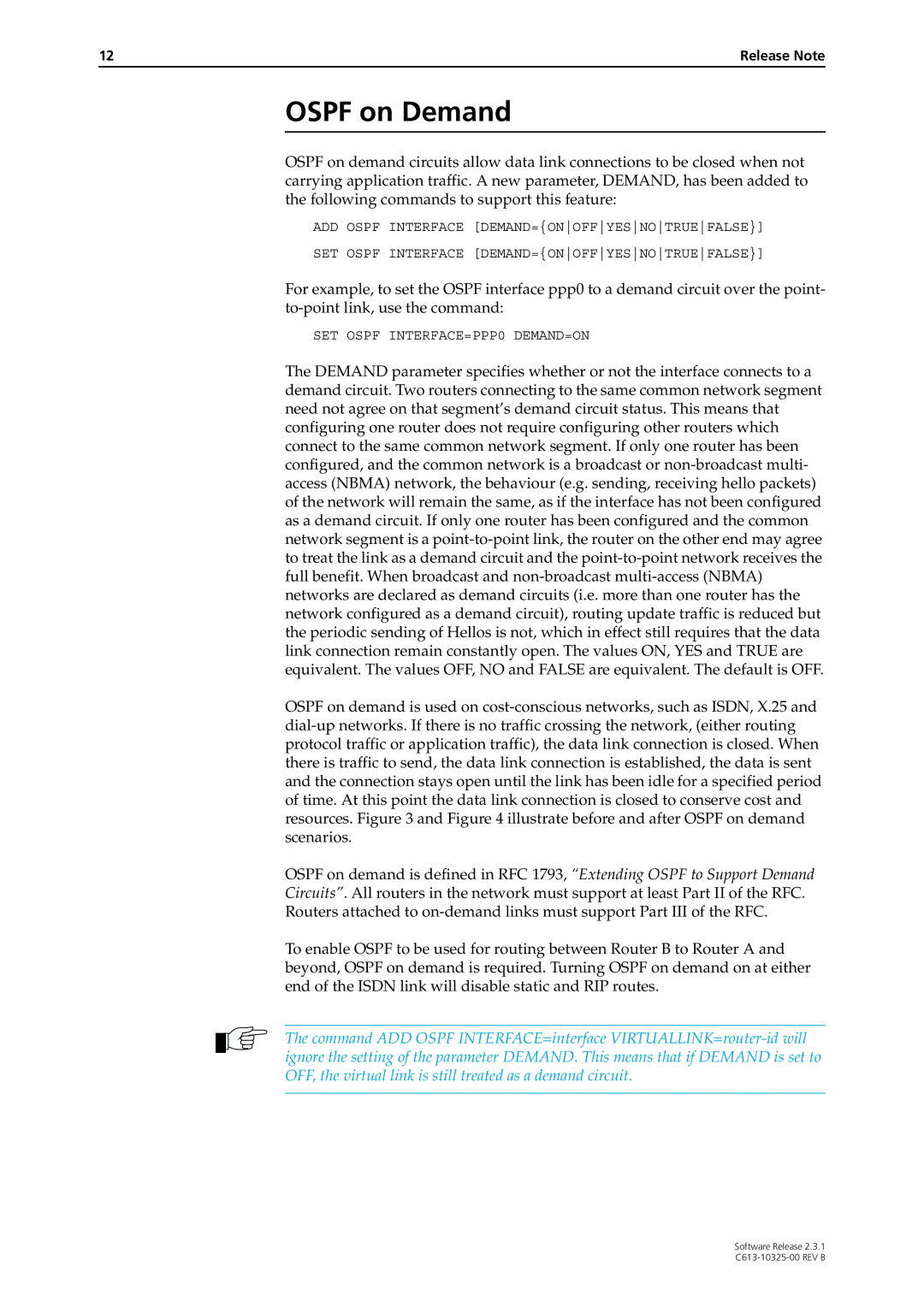OSPF on Demand
OSPF on demand circuits allow data link connections to be closed when not carrying application traffic. A new parameter, DEMAND, has been added to the following commands to support this feature:
ADD OSPF INTERFACE [DEMAND={ONOFFYESNOTRUEFALSE}]
SET OSPF INTERFACE [DEMAND={ONOFFYESNOTRUEFALSE}]
For example, to set the OSPF interface ppp0 to a demand circuit over the point- to-point link, use the command:
SET OSPF INTERFACE=PPP0 DEMAND=ON
The DEMAND parameter specifies whether or not the interface connects to a demand circuit. Two routers connecting to the same common network segment need not agree on that segment’s demand circuit status. This means that configuring one router does not require configuring other routers which connect to the same common network segment. If only one router has been configured, and the common network is a broadcast or non-broadcast multi- access (NBMA) network, the behaviour (e.g. sending, receiving hello packets) of the network will remain the same, as if the interface has not been configured as a demand circuit. If only one router has been configured and the common network segment is a point-to-point link, the router on the other end may agree to treat the link as a demand circuit and the point-to-point network receives the full benefit. When broadcast and non-broadcast multi-access (NBMA) networks are declared as demand circuits (i.e. more than one router has the network configured as a demand circuit), routing update traffic is reduced but the periodic sending of Hellos is not, which in effect still requires that the data link connection remain constantly open. The values ON, YES and TRUE are equivalent. The values OFF, NO and FALSE are equivalent. The default is OFF.
OSPF on demand is used on cost-conscious networks, such as ISDN, X.25 and dial-up networks. If there is no traffic crossing the network, (either routing protocol traffic or application traffic), the data link connection is closed. When there is traffic to send, the data link connection is established, the data is sent and the connection stays open until the link has been idle for a specified period of time. At this point the data link connection is closed to conserve cost and resources. Figure 3 and Figure 4 illustrate before and after OSPF on demand scenarios.
OSPF on demand is defined in RFC 1793, “Extending OSPF to Support Demand
Circuits”. All routers in the network must support at least Part II of the RFC.
Routers attached to on-demand links must support Part III of the RFC.
To enable OSPF to be used for routing between Router B to Router A and beyond, OSPF on demand is required. Turning OSPF on demand on at either end of the ISDN link will disable static and RIP routes.
The command ADD OSPF INTERFACE=interface VIRTUALLINK=router-id will ignore the setting of the parameter DEMAND. This means that if DEMAND is set to OFF, the virtual link is still treated as a demand circuit.

